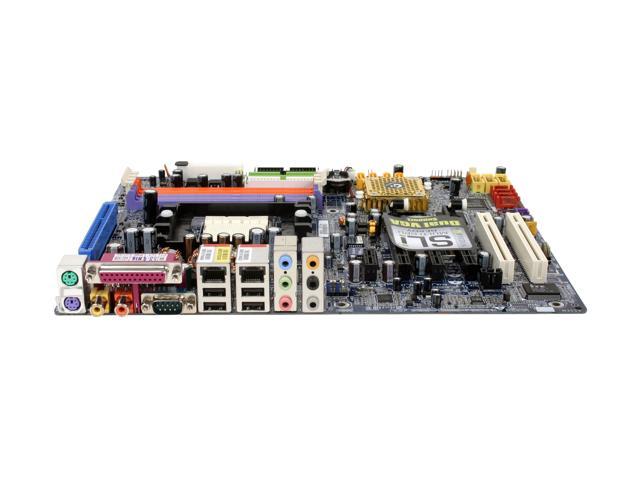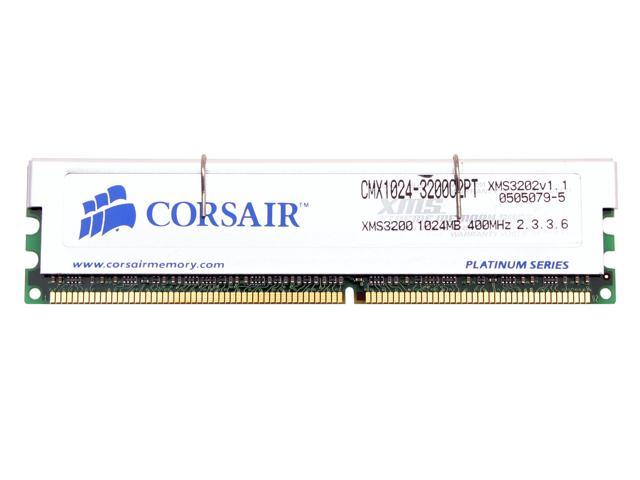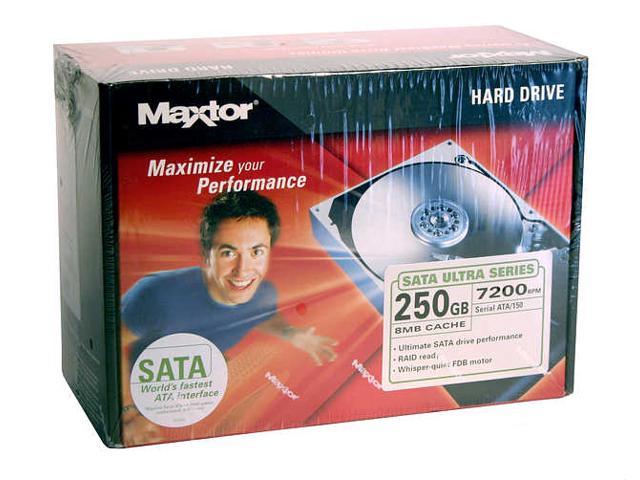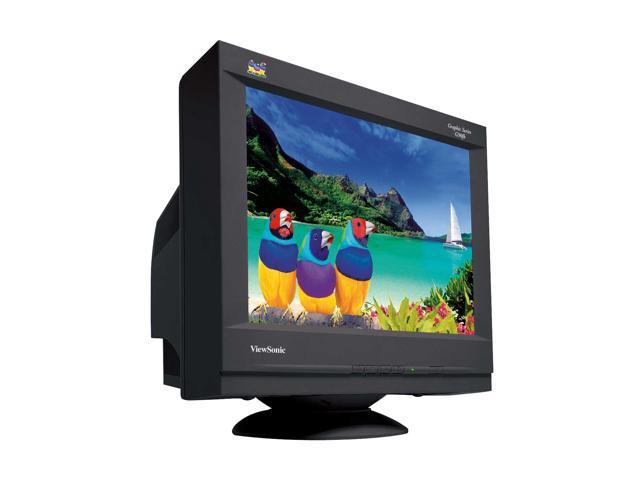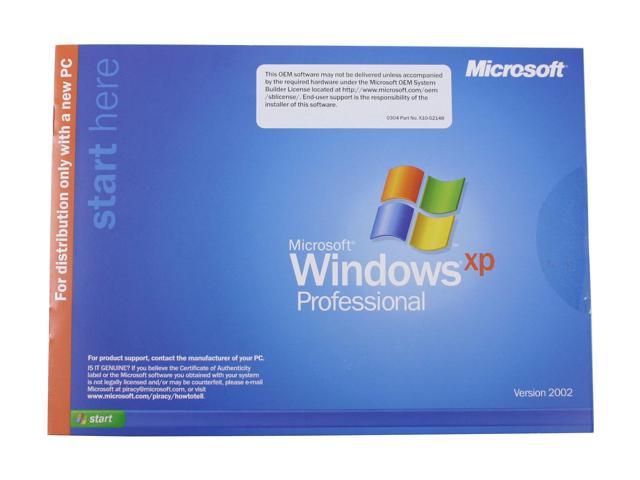-
New IT opportunites tease small business
Date: 02/03/05 (IT Management) Keywords: technology
Commentary--As the cost of IT comes down, it's changing the ways small businesses use technology.
-
Group aims to drastically up disc storage
Date: 02/04/05 (Data Management) Keywords: technology
HVD technology could let consumers store as much data as 200 standard DVDs hold.
-
Landmark judgement of 1 Billion $ awarded to ISP in Anti-SPAM suit
Date: 12/19/04 (Java Web) Keywords: html, technology, spam
A wonderful christmas/hanukkah present I must say :) http://tech.nytimes.com/aponline/technology/AP-Spam-Lawsuit.html
Source: http://feeds.feedburner.com/AngsumansBlogOnJavaAndWebTechnologies?m=102
-
Ask Jeeves mulls Firefox-based browser
Date: 02/15/05 (Web Technology) Keywords: browser, technology
Ask Jeeves, Mozilla Foundation begin talks on Jeeves browser and on donating Jeeves' search technology to the open-source group.
-
Off-the-Record Messaging for the Paranoid
Date: 02/15/05 (Java Web) Keywords: technology
An interesting technology to keep an eye on. Off-the-Record Messaging Off-the-Record (OTR) Messaging allows you to have private conversations over instant messaging by providing:
Source: http://feeds.feedburner.com/AngsumansBlogOnJavaAndWebTechnologies?m=150
-
Elementary school nixes electronic IDs
Date: 02/18/05 (Security) Keywords: technology
Under scrutiny, technology supplier shelves plan for outfitting California students with high-tech badges.
-
Midnight at the OASIS
Date: 02/22/05 (Open Source) Keywords: technology
Boycott OASIS? Paul Festa has the story. The leading e-business standards body faces a boycott based on its new intellectual property policy, which endorses the inclusion of technology requiring payment of royalties to its standards. The new policy goes into effect in April.Festa notes that a who's who of open ...
-
AdSense as java expert?
Date: 03/01/05 (Java Web) Keywords: technology, java, jsp
I was responding to a pdf viewing (using java) question on Artima - http://www.artima.com/forums/flat.jsp?forum=1&thread=96447&start=0&msRange=30. After I submitted my comments I noticed that the first AdSense ad contained the same link I had posted! Looks like very soon AdSense may supplement the java and other technology experts! The funny thing was the previous response which states - no [...]
Source: http://blog.taragana.com/index.php/archive/adsense-as-java-expert/
-
Off-the-Record Messaging for the Paranoid
Date: 02/15/05 (Java Web) Keywords: technology
An interesting technology to keep an eye on. Off-the-Record Messaging Off-the-Record (OTR) Messaging allows you to have private conversations over instant messaging by providing: Encryption No one else can read your instant messages. Authentication You are assured the correspondent is who you think it is. Deniability The messages [...]
Source: http://blog.taragana.com/index.php/archive/off-the-record-messaging-for-the-paranoid/
-
Notebook
Date: 02/28/05 (Computer Geeks) Keywords: technology
I'm selling my Compaq Presario r3240US notebook for $1100 or best offer. I've bought it 4 months ago for $1500 plus tax and shipping.
Here's some stats:
• AMD® Athlon™ 64 processor 3200+ with PowerNow!™ technology
• Windows XP Home
• 512MB DDR SDRAM
• 60GB hard drive
• DVD+R/RW and CD-RW combo drive
• 15.4" WXGA high-definition widescreen display
• 54g™ integrated 802.11b/g wireless LAN
• 5-in-1 digital media card reader
• 3 USB ports
• S-Video
It's still under warranty. Let me know if anyone is interested or want more info.Source: http://www.livejournal.com/community/computergeeks/617508.html
-
Some Jobs
Date: 01/20/05 (IT Professionals) Keywords: rss, technology, database, web
If any of you are looking for jobs, check out International Legal Technology Association's Available Positions webpage.
I work for a law firm as a database administrator and I really enjoy it. The company I work for has been around for over 100 years and they are really great with benefits. In short, law firm tech jobs can rock.
Some of the jobs listed are...
Database Administrator - Cleveland, OH
Desktop/Network Support Analyst - San Diego, CA
Application Developer - Los Angeles, CA
Senior Network Engineer - New York, NY
It's updated almost daily. I asked them for an RSS feed but haven't heard back :|Source: http://www.livejournal.com/community/itprofessionals/1842.html
-
The Nex Web Browser
Date: 12/02/04 (C Sharp) Keywords: browser, xml, technology, web
Hello! I had release my Nex Web Browser version A1 at http://nex.sourceforge.net/ . Now I preparing the A2 version for releasing, and this will be very interest to read your opinions about this program, its Internal Protocol (NIP, provides LDP - Local Dynamic Page) technology, XML configuration format, LanguageSet implementation, sidebar, etc..
Source: http://www.livejournal.com/community/csharp/21817.html
-
Hurrah for Graduation Presents.
Date: 03/03/05 (Computer Geeks) Keywords: technology, asp, microsoft
Cooler Master Cavalier 1 Silver/Blue ATX Mid Tower Case With analog dial & 350W Power Supply, Model "CAV-T01-WWA" -RETAIL
Model# CAV-T01-WWA
Item # N82E16811119049
Specifications:
Case Type: Mid Tower Case
Color: Silver/Blue
Material: Aluminum Bezel, SECC Chassis
Drive Bays: 5.25" x 5/0, 3.5" x 1/4 (external/internal)
Expansion Slots: 7
Front Ports: 2 x USB2.0, 1 x IEEE1394
Power Supply: Cooler Master 350W
Cooling System: 1 x 80mm Front Fan, 1 x 120mm rear fan
Motherboard Compatibility: Standard ATX
Dimensions: 19.7" x 8" x 17.2" (DxWxH)
Special Features: Unique Classical Design Sound Pressure Device
$99.99
Aspire 520W 12V Triple Fan Aluminum Power Supply (Silver), Model "ATX-AS520W SILVER" -RETAIL
Model# ATX-AS520W SILVER
Item # N82E16817148009
Specifications:
Type: ATX
Maximum Power: 520W
Material: Aluminum
Dimensions(DxWxH): 150x168.5x86mm
Shipping Weight: @pc 4.5 lbs / 8pcs Per Box
Features: ATX 520 P4 Aluminum Power Supply w/2*8 cm UV Blue Fan Intake Heat w/1*8 cm UV Blue Fan Exhaust Heat w/4 Blue Led Multi-Color Coated Components & PC Board Green UV Sensitive Wiresleeve & Connectors w/Fan Speed Adjuster w/ I/O Switch
Cable-Tube-Tied Wires for Neatness w/Gift Box
$59.00
GIGABYTE "GA-K8NXP-SLI" NVIDIA nForce4 SLI Chipset Motherboard For AMD Socket 939 CPU -RETAIL
Model# GA-K8NXP-SLI
Item # N82E16813128269
Specifications:
Supported CPU: Socket 939 AMD Athlon 64FX/64
Chipset: NVIDIA nForce4 SLI
RAM: 4x DIMM Dual Channel DDR333/400 Max 4GB
Slots: 2x PCI-Express X16, 2x PCI-Express X1, 2x PCI
Ports: 2x PS/2, 1x COM, 1x LPT, 10x USB2.0(Rear 4), 2x RJ45, 2x SPDIF In/Out, Audio Ports
IDE: 2x ATA 133 with NV Raid 0/1/0+1
SATA: 4x SATA2 3.0Gb/s with NV Raid 0/1/0+1, 4x SATA by sil 3114
Onboard Audio: Realtek ALC850 8-channel
Onboard LAN: Marvell 8053 Gigabit Ethernet, CICADA8201 Gigabit LAN
Onboard 1394: 2x IEEE 1394b supports 3 ports
Form Factor: ATX
$209.00
AMD Athlon 64 3800+, 512KB L2 Cache, 64-bit Processor, Socket 939 - Retail
Model# ADA3800AWBOX
Item # N82E16819103465
Specifications:
Model: AMD Athlon 64
Core: Newcastle
Operating Frequency: 2.4GHz
FSB: Integrated into Chip
Cache: L1/64K+64K; L2/512KB
Voltage: 1.5V
Process: 0.13Micron
Socket: Socket 939
Multimedia Instruction: MMX, SSE, SSE2, 3DNOW!, 3DNOW!+
Warranty: 3-year MFG
Packaging: Retail box(with Heatsink and Fan)
$429.00
Corsair XMS Extreme Memory Speed Series, Platinum 184-Pin 1GB DDR PC-3200 - Retail
Model# CMX1024-3200C2PT
Item # N82E16820145560
Specifications:
Manufacturer:Cosair XMS
Speed: DDR400(PC3200)
Type: 184-Pin DDR SDRAM
Error Checking: Non-ECC
Registered/Unbuffered: Unbuffered
Cas Latency: 2-3-3-6
Support Voltage: 2.75V
Bandwidth: 3.2GB/s
Organization: 128M x 64-bit
Warranty: Lifetime
$264.00
ATI All-In-Wonder RADEON X600 PRO Video Card, 256MB DDR, 128-Bit, DVI/VIVO, PCI Express, Model "100-714131" -RETAIL
Model# 100-714131
Item # N82E16814102463
Specifications:
Chipset/Core Speed: ATI Radeon X600 PRO/400MHz
Memory/Effective Speed: 256MB DDR/600MHz
BUS: PCI Express x16
Ports: VGA Out(15 Pin D-Sub) + VIVO + DVI
Support 3D API: DirectX 9.0, OpenGL 1.5
Max Resolution@32bit Color: 2048X1536@85Hz
TV Tuner: NTSC
$229.00
Plextor 16X Dual Layer DVD+/-RW SATA Drive, Model PX-716SA/SW, Retail
Model# PX-716SA/SW
Item # N82E16827131351
Specifications:
Write Speed: 16X DVD+R, 8X DVD+RW, 16X DVD-R, 4X DVD-RW, 4X DVD+R DL, 48X CD-R, 24X CD-RW
Read Speed: 48X CD-ROM, 16X DVD-ROM
Interface: SATA
Buffer: 8 MB
OS Support: 98 SE, Windows Me, Windows 2000, Windows XP
Features: Buffer Underrun Proof Technology
Packaging: Retail Pack (see pictures for details)
$122.99
Maxtor Ultra Series Kit 250GB 7200RPM SATA Hard Drive, Model L01M250, Retail
Model# L01M250
Item # N82E16822144354
Specifications:
Capacity: 250 GB
Average Seek Time: 9.3 ms
Buffer: 8 MB
Rotational Speed: 7,200 RPM
Interface: SATA
Features: Ideal for high-end gaming and digital video, Ultra quiet operation with FDB motor
Manufacturer Warranty: 1 year
$193.01
Logitech diNovo Media Desktop USB/ PS/2 104 keys -RETAIL
Model# 967312-0403
Item # N82E16823126138
Specifications:
Interface: USB/ PS/2
Number Of Keys: 104 keys + Detached MediaPad
Wireless Technology: Bluetooth
Palm Rest: Yes
Design Style: Standard
Mouse included: MX900 Bluetooth Rechargeable mouse
Features: BluetoothВ® MediaPad Ultra-flat, Zero Degree Tilt Keyboard design, Bluetooth wireless hub is built into the mouse's recharging station.
$165.00
ViewSonic G90FB 19" PerfectFlat CRT Monitor -RETAIL
Model# G90FB
Item # N82E16824116282
Specifications:
CRT Type: PerfectFlatВ® screen
Dot Pitch: 0.25mm diagonal
Max / Optimal resolution: 1920x1440 @ 64Hz / 1600x1200 @ 77Hz
Frequency / Bandwidth: fh: 30~97kHz; fv: 50~180Hz / 200MHz
Features: SuperClearВ® technology, ARAGВ® screen treatment
Dimensions & Weight: 17.6" x 18.3" x 18.1" (WxHxD), 48.5 lbs
Manufacturer's Warranty / Phone No.: 3 year limited warranty on CRT, parts and labor / 800-688-6688
$209.00
Microsoft Windows XP Professional With Service Pack 2 -OEM
Model# E85-03013
Item # N82E16837102153
$147.95
Total cost of System: $2127.94 + $264 = $2393.94 when I get the extra stick of RAM I had $2,000 with a little leway so this is what I built.
Now to buy WoW...Source: http://www.livejournal.com/community/computergeeks/619466.html
-
Le dйveloppement de l'offshore en Russie
Date: 12/14/04 (Offshore Programming) Keywords: programming, software, offshore, technology, microsoft
Can Offshore Programming Thrive in Russia?
By Alexander Osipovich, Russia Profile
Every weekday morning, Tatyana Burtseva flashes her ID to the guards at the entrance of the Kurchatov Institute, where the Soviet Union developed its first nuclear bomb. But after walking through the institute's wooded grounds and entering the modern, corporate office building where she works, what she does is not top-secret. Burtseva is currently working on a project for a U.S. client - Boeing, America's largest maker of commercial aircraft. The 26-year-old software tester is one of over 850 employees at Luxoft, one of Russia's leading companies in the field of offshore programming. Besides Boeing, Luxoft has tackled software projects for major corporations like IBM, Microsoft and Deutsche Bank.
In 2003, the Russian offshore programming industry earned total revenues of $546 million, according to figures compiled by CNews Analytics and Fort-Ross, an association of Russian software companies. The same report projected growth rates of 30 to 40 percent for the next few years, meaning that the industry could cross the $1 billion mark by 2006.
These rapid growth rates, and the prestigious nature of the industry, have not gone unnoticed. President Vladimir Putin has mentioned offshore programming as a promising agent of economic diversification, while Leonid Reiman, the minister of information technologies and communications, has touted the industry in public appearances. "We have a tremendous number of highly qualified professionals," he said during a recent address to the American Chamber of Commerce in Russia. "Our task is to convert this human potential into a new source of national income."
But the Russian offshore programming industry faces some daunting challenges. Above all, it pales in comparison to its better-developed cousin in India. According to NASSCOM, an association of Indian software companies, India now earns $12.5 billion a year by exporting high-tech services. This represents close to one-fifth of the developing nation's total exports. For many Western executives, the term "offshore programming" is virtually synonymous with outsourcing work to India, while Russia remains an obscure, second-tier competitor. This has led to a great deal of soul-searching in the Russian press about whether Russia can catch up to India.
Can Russia Catch Up?
In the eyes of many experts, the greatest asset of the Russian offshore programming industry is the high quality of its technical specialists. The Soviet Union left behind a world-class system of science education. As a result, Russia now has up to 40 percent more scientists per capita than Germany, France or the United Kingdom, and 20 times more scientists per capita than India, according to Forrester Research. Russians have won numerous gold medals at international programming competitions. At this year's ACM International Collegiate Programming Contest, the best-known event of its kind, the winning team was from the St. Petersburg Institute of Fine Mechanics and Optics.
This pool of scientific talent has led several Western companies to open wholly-owned offshore development centers in Russia. Such companies include technology leaders like Intel, Sun, Motorola and Siemens. Intel alone has over 800 Russian employees, mostly based in Nizhny Novgorod and the former closed city of Sarov. According to Alexander Palladin, a spokesman for Intel in Russia, they solve difficult problems for the company's research and development wing. "In the eyes of Intel's management, Russian specialists are very highly regarded for their scientific knowledge," he said.
Unfortunately, Russia is not so blessed when it comes to business skills. A frequent complaint is the lack of English, although this has improved in recent years. When it comes to project management, Russian firms have a reputation for letting their programmers' creativity take precedence over good business sense. In some cases, programmers have been known to delay a project until they can achieve technical perfection. Other problems stem from a culture clash between Russian firms and their Western clients. "The biggest difference is that Americans devote more time to communication," said Alexander Sambuk, quality director at Luxoft. "Russian project managers need to learn to communicate more with clients, and not just stew in their own juices."
Another obstacle to acquiring new clients is the small size of Russian firms. Russia's largest offshore programming companies, Epam Systems and Luxoft, have less than 1,000 employees each. This is small potatoes compared to the largest Indian firms, such as IT giant Wipro, which employs over 27,000 people worldwide and has annual revenues of $1.2 billion. Smaller companies have a hard time marketing themselves and are less attractive to large corporate clients. Given this situation, it might seem that the market is ripe for consolidation. But firms have been reluctant to merge, says Kirill Dmitriev, managing director of Delta Private Equity Partners. "Each one hopes to develop by itself, but economic logic mandates that they need to consolidate," he said.
Perhaps a more intractable problem is Russia's negative image in the West. Russia's reputation as an unstable, crime-ridden society makes it a hard sell to wary customers. "This is a country where there's a war going on, where [former Yukos CEO Mikhail] Khodorkovsky is in prison, where terrorists are killing children in Beslan," said Dmitry Loschinin, CEO of Luxoft. "Obviously, this affects us negatively."
Loschinin also believes that Russia's education system could be better suited to today's IT market. Although it churns out an impressive number of physicists and mathematicians, it rarely teaches them the most up-to-date technology skills. "What we receive is a half-finished product that we need to spend some time finishing," said Loschinin.
Another problem is that Russia's education system produces programmers in all the wrong places. Thanks to the legacy of Soviet central planning, some of the nation's top scientific talent resides in far-flung cities like Tomsk and Novosibirsk. Less than a quarter of Russia's programmers live in Moscow and St. Petersburg, where the offshore programming industry is concentrated. The result is that wages are high and jobs are plentiful in the two capitals, while out in the regions, programmers are underpaid or jobless. The logical conclusion is that programmers should move to where the jobs are. But Russians - for a variety of legal, economic and cultural reasons - are often reluctant to move.
A City Of Programmers
The offshore programming industry is taking steps to attract them. IBS, the holding company which owns Luxoft, is planning to open a "technopark" in the town of Dubna, a one-hour drive from Moscow. According to Loschinin, programmers will be enticed to move to Dubna by a package that includes jobs, mortgages and a pleasant, academic living environment. "We want to create a city of programmers," he said.
The Dubna technopark will not be alone. The IT and Communications Ministry will soon launch technoparks in St. Petersburg and Novosibirsk, with tax breaks and an up-to-date communications infrastructure, says Reiman. These ideas are not new. A decade ago, India used similar policies to stimulate the IT industry in Bangalore. Today Bangalore is the center of India's offshore programming industry; the city is often called the "Silicon Valley of India."
The Russian offshore programming industry is emulating India in other ways. It recently formed an analogue to NASSCOM, the Indian software association founded in 1988 to promote the nation's IT industry. RUSSOFT, which recently merged with Fort-Ross to become the predominant association of Russian software companies, has been following a path blazed by NASSCOM in the 1990s. It puts on "road shows" in the West to promote Russian firms, holds training events and lobbies for improvements in government policy.
There is clearly a need for lobbying, because government policy is unfriendly - if not hostile - to offshore programming companies. Valentin Makarov, president of RUSSOFT, says that companies face a crippling burden from taxes and regulations. For example, to export $50 worth of software, companies spend an additional $30 on paperwork and taxes. This drives up their prices, making them less competitive, and keeps many in the "gray" zone. Makarov argues that this is bad for everyone. "Our task is to make companies go white," he said. "Companies want this, because you can't live under the constant threat of tax investigations. This prevents you from signing deals with foreign corporations."
Yet Makarov insists that he is not looking for tax breaks, which are controversial due to their widespread misuse in the 1990s. Instead, he wants the government to adopt a more streamlined and rational tax structure. So far, however, RUSSOFT's lobbying efforts have produced few results. "Our government isn't used to dealing with associations - just with oligarchs and individual companies," he said. Nonetheless, Makarov is optimistic. He believes that the industry will gain more influence as it grows in size. In terms of the total value of its exports, it has already surpassed the Russian automobile industry. Soon, Russia will earn more money by exporting software than by exporting nuclear technology.
Makarov predicts that the Russian offshore programming industry will grow until it reaches annual revenues of $2 billion but, from then on, growth will level off unless the government provides substantial support. He points out that the governments of India and China (another up-and-coming offshore service provider) are extremely proactive in boosting their nations' IT sectors. For example, they pay for companies to participate in international trade shows - something that the Russian government has never done.
So can Russia catch up to India?
Most experts doubt that Russia can beat India in terms of volume. But in terms of quality, Russia already presents a strong competitor. According to a 2001 report from the American Chamber of Commerce in Russia, Russian programmers are well suited for complex projects. "Indian programmers... do not have such wide experience with different technologies," said the report. "Their experience is typically limited to working in large software development factories." Makarov thinks that Russia cannot compete with India or China on cost, but in the niche of high-end solutions, it could become a world leader - as long as the industry gets government support.
"We can't do it ourselves," he said.
Oct 27, 2004
-
L'offshore programming dans les marchйs du test et du consulting ?
Date: 12/07/04 (Offshore Programming) Keywords: software, offshore, technology, offshoring
Consulting and application testing are among the newer services moving overseas as offshore IT services look to more than double over the next five years.
Offshore I.T. firms will enjoy double-digit gains in sales over the next several years as vendors from India and other emerging markets boost their capabilities and U.S. and European businesses continue to seek ways to cut technology-related costs, new research suggests.
The worldwide market for offshore IT services will grow to $17 billion in 2008 from $7 billion in 2003, achieving a compound annual growth rate of 20%, according to a study released last week by market researcher IDC. The study tracks only those IT-services sales won by offshore companies such as India's Wipro Technologies and Infosys Technologies. It doesn't include the value of work being placed offshore by U.S. service providers such as IBM and EDS.
The growth is driven in part by the fact that some IT-related work that has been relatively immune to offshoring is starting to move overseas, says Barry Mason, a senior analyst at IDC. "We're starting to see offshore firms move up the value chain," Mason says. IT consulting, he adds, represents one new market that offshore firms are aggressively pursuing.
 The good news for some U.S. IT professionals: As offshore companies expand, they're opening offices in the United States and hiring locally, albeit in modest numbers and at very senior levels. Cognizant Technology Solutions Corp., an IT-services company with headquarters in Teaneck, N.J., and operational centers throughout India, has hired five senior-level consultants in the United States this year and expects to add another five next year, says Kaushik Bhaumik, VP for Cognizant's Business Technology Consulting Practice.
The good news for some U.S. IT professionals: As offshore companies expand, they're opening offices in the United States and hiring locally, albeit in modest numbers and at very senior levels. Cognizant Technology Solutions Corp., an IT-services company with headquarters in Teaneck, N.J., and operational centers throughout India, has hired five senior-level consultants in the United States this year and expects to add another five next year, says Kaushik Bhaumik, VP for Cognizant's Business Technology Consulting Practice.
Bhaumik, formerly an associate principal with McKinsey & Co., says there's little reason why the same economies that offshore companies provide for basic services such as application development and mainten- ance can't be applied to consulting. "A lot of the number crunching that backs up the engagement can be done overseas," Bhaumik says. As a result, he says, Cognizant can sell a project that would typically cost about $300,000 for about $100,000. Among the company's offerings: application portfolio analysis.
Some U.S. vendors, however, are skeptical about the extent to which the offshore model can be applied to consulting. "It's not a market that's driven by low cost. It's more about how you can successfully transform a customer's business, and that requires a lot of local knowledge," says a spokesman for IBM Business Consulting Services.
But offshore companies are building out their capabilities in other ways, too. A bellwether of the application-outsourcing market, Wipro has built a software test center at its Bangalore, India, development campus. With the center, Wipro will be able to add application software testing for both function and performance to its outsourcing services. It will also be able to test apps its teams develop before shipping them to U.S. and European businesses. "Testing used to be done on an ad hoc basis as the client requested it, was done by the client, or wasn't done at all," says Chris Lochhead, chief marketing officer of Mercury Interactive Corp., whose testing tools will be used in the Wipro Center of Excellence.
Most outsourcing companies don't yet offer testing as a standard service, Lochhead says. Wipro's test center is a sign of the growing sophistication of offshore-outsourcing companies, he adds. Having competed successfully on price, he says, now they're better equipped to guarantee performance and "compete on quality as well."
-
Tech Spending Looks Up in Asia, E.Europe
Date: 11/26/04 (Offshore Programming) Keywords: software, technology
Tech Spending Looks Up in Asia, E.Europe
WASHINGTON (Reuters) - Spending in Eastern Europe and Asia is expected to lead a recovery in the global technology market over the next three years, according to an industry report released Tuesday.
After years of sluggish growth, technology spending is expected to climb steadily through 2007 as China, Poland and other countries in the developing world invest heavily in hardware, software, networking equipment and services, according to a study commissioned by World Information Technology and Services Alliance, an industry trade group.Total spending should hit $3.2 trillion in 2007, up from $2.1 trillion in 2001, the report said.
Spending in Asia and the Pacific Rim is expected to grow quickest at 9.3 percent annually, while spending will increase in Europe, the Middle East and Africa at a rate of 8.9 percent per year.
Technology markets in North and South America will grow at a 6.7 percent annual clip, according to the report.
In the face of higher growth elsewhere, the Western Hemisphere is expected to account for 44 percent of the market, down from 46 percent in 2003, the report said.
As developing countries jump in the tech game their influence is expected to grow accordingly, the report said.
"Although the dominance of the developed world (in technology) is not likely to change soon, the developing world can no longer be ignored or considered irrelevant," the report said.
The report was produced using data provided by consulting firm Global Insight Inc.
The U.S.-based World Information Technology and Services Alliance is a group of 65 technology trade groups from around the world.
-
Offshore programming, outsourcing: meilleur pour tout le monde ?
Date: 11/22/04 (Offshore Programming) Keywords: software, technology, offshoring
Offshoring: It's better for everybody
Offshoring is benefiting companies, countries and economies on both sides of the debate, according to attendees at the Better Management Live Conference in Las Vegas this week.
Technology companies in Europe and the US claim the offshoring 'kick-back' is the creation of new jobs in their domestic market which are "higher up the economic value scale" than those jobs which they have sent to countries such as India.While on an individual-by-individual basis there are clearly those who will be worse off, in general this is having a positive effect on Western economies and workforces, according to Nigel Holloway, director of executive services at the Economist Intelligence Unit, who quoted McKinsey figures.
Chip Greenley, VP marketing and solutions at HP, said: "From a generic perspective it has to be good for the global economy."
Greenley and representatives from other vendors, said cost savings associated with offshoring are being reinvested in the creation of more high-value roles in the domestic market.
"We have taken large chunks of our business and moved them overseas," said Greenley. "If we know that by offshoring our accounts payable handling we will create the budget to hire 200 new hardware and software engineers then I can tell you it is going to happen."
Art Cooke, president of SAS International, agreed with such a strategy.
"We try to do the sensible things and do what is best for us," said Cooke, who said that may include outsourcing some "background work" but warned against outsourcing any development of core business or handing over the reins on any project linked to the growth of the company.
Cooke added that those who are currently getting heated about a large number of less skilled jobs going overseas are guilty to some degree of a lack of ambition and expressed surprise that in "a knowledge economy" there is such anger over the loss of back-office jobs.
"Would people really rather their son or daughter was studying how to programme some small part of an ERP system or working towards something genuinely innovative and cutting edge?" he said.
Cooke believes the fright of the offshoring phenomenon should encourage Western economies to remember to keep innovating and generating invaluable new skills sets.
"If an economy isn't going to innovate it deserves everything it gets," he said.
-
L'offshore programming: un risque calculй а .. calculer
Date: 11/08/04 (Offshore Programming) Keywords: programming, offshore, technology
Calculated Risk
Sheeroy DesaiAs corporate interest in the cost savings and benefits grows, CIOs prepare to manage the risks and pitfalls of offshore outsourcing.
Several years ago, a CIO from a large financial-services institution began outsourcing a hefty portion of his legacy-programming resources to an overseas provider. And with expected savings of 40% to 50%, who could blame him? But strangely, this early adopter's savings never fully materialized. After replacing his onshore programmers with an offshore staff, he had to hire managers to maintain the engagement, adding costs. Then the CIO realized he'd need a larger percentage of onshore programmers than originally projected, further reducing his expected savings. In fact, after he accounted for the turnover from the offshore teams, his anticipated windfall of 40% to 50% had shrunk to less than 20% in all.
This CIO is in good company. Corporate interest in offshore outsourcing is huge, as the size of the market attests. But the reality doesn't always live up to the hype. Many companies that have embraced the practice haven't realized the promised savings; they're now wondering if and when they'll see the real value from their offshore investments.
For some companies, offshore outsourcing's initial appeal lies purely in the numbers. Success is measured by the ability to reduce costs as much as possible. It's not hard to see that by paying $20-plus per hour in India versus $80-plus in the United States a company's savings can be at least $60 per hour for every position outsourced. That math can be misleading, however. Instead of the 80% cost savings that those hourly rates suggest, companies are reporting far lower numbers. According to a recent AMR Research report, companies using offshore resources for development projects can see no savings at all or up to 50% savings. The majority report savings in the neighborhood of 25% to 30%.
What happened to the rest of the anticipated savings? As many CIOs are beginning to realize, outsourcing decisions based solely on hourly rates don't necessarily result in real cost savings. Hidden costs arise when a company doesn't first build a strong engagement-management experience, outsourcing industry expertise, technical knowledge, and a method for overcoming cultural and communication barriers.
By all accounts, outsourcing is a long-term investment, and it requires a serious commitment in order to reap the maximum benefits.
A December 2003 report from Forrester Research said most companies go through a four-stage migration period that can last from 24 to 60 months. Those expecting a quick, six-month project with few to no challenges would do well to rethink their strategy.
In their search for savings, many companies mistakenly assume that a single offshore provider can be successfully deployed on any and all IT projects. Instead, CIOs need to first analyze their IT-application portfolio based on business criticality, user interaction, complexity, and maturity. Only then will they have the knowledge to outsource their projects to a provider with the right skills and expertise to deliver successful results.
There are several types of offshore-outsourcing companies (see Indian Market Booms, But Changes Loom). The most prominent are the traditional offshore providers, such as Indian companies Infosys Technologies, Tata, and Wipro Technologies. Many offshore pure-play companies have narrow portfolios of services.
Then there are the large global integrators, such as IBM and Accenture, which recently developed offshore capabilities. These companies don't yet have large presences offshore, but they've developed experience managing engagements between U.S. companies and the offshore businesses and are quickly hiring staff offshore. Other consultancies have gone for a more hybrid approach, creating large divisions offshore.
Matching the right segments of work to the appropriate provider is the best approach to realizing the maximum savings from offshore outsourcing. We recommend that companies choose at least one provider from each category.
Managing IT projects successfully has always been a struggle for IT organizations, as the alarming rate of IT-project failure attests. A 2003 Standish Group survey found that 66% of outsourced projects are either canceled or materially off-target due to poor program execution, leading to additional costs in areas such as lost-opportunity costs, unrealized benefits, increased labor costs, and increased vendor costs. Unfortunately, outsourcing your IT initiatives doesn't make these problems go away. Using offshore programmers--who may lack business acumen and methodologies to extract accurate and detailed requirements--possibly can result in significant costs downstream. The repercussions can range from adding more--and expensive--local management to overcome the offshore team's lack of business experience, to late delivery, lost functionality, and fewer benefits realized from the investment.
Offshore outsourcing sometimes creates additional requirements and program-management challenges. Effective management is critical to improving the odds of success and overcoming the risks associated with IT-project failure. These risks--lack of clear business objectives, executive support, user involvement, and scope management--become exacerbated when the users and programmers are up to 8,000 miles and multiple time zones apart. Poor program management costs 25% to 35% in the concept-to-design phases, and 15% during the implementation phase. These costs reflect the additional management resources required to fix the problems.
Calculated Risk
There has always been an inherent conflict between the IT-services provider and the company contracting for services. This conflict stems from how the client pays for services--whether the contract is time and materials (T&M) or fixed price.
The issue is risk as one side tries to push most of the risk to the other. The vast majority of the revenue for major Indian offshore providers and integrators is derived from T&M contracts. These companies prefer a T&M contract because the risk shifts to the client, on which any project-overrun costs fall.
On the other hand, a fixed-price delivery model puts the onus on the service provider to get the right requirements, manage scope, and estimate and manage the project. This helps to insulate the client against the risks that can erode savings.
The fixed-price model also makes the service provider a better partner, as it's in the provider's best interest to get the project done--and done right. The provider's methodology and experience are critical.
Sophisticated clients look for providers that not only offer fixed-price contracts, but also attach results to fees. Measurable business results are replacing metrics such as service levels as a way to ensure that companies achieve real business value.
Defining measurable business results isn't easy. However, the benefits of defining them up front are high. Consider this example: If a company ties some portion of the contract to a 20% reduction in the cost of servicing customers using online channels, the provider will be motivated to achieve that result, as long as both risks and rewards are tied to the objective. The client wins because the provider is aligned with its business goals and hires the best people who can bring the greatest level of industry knowledge and business processes, as well as creativity and innovation--something clients have complained that many offshore businesses lack.

Don't bank on immediate payoff, however, and do bank on some heavy lifting when switching to offshore. CIOs must factor in significant ramp-up time for offshore projects, during which costs can actually increase. According to Meta Group, lags in productivity can add as much as 20% in costs to the offshore contract.
Part of that lag lies in the need for staffing overlap as the home team hands off to the offshore programmers. But there's more: All offshore providers have two rate schedules: offshore, which is the rate charged for work done overseas, and onshore, meaning the rates charged for the consultants that must come on-site during the transition period. The onshore rates are significantly higher and usually rival internal IT costs.
We've found that clients invariably underestimate the number of onshore staff required to make a project successful. This leads to inflated expectations of savings at the onset of a project. More than half of the revenue generated by the large Indian offshore companies is derived from onshore-staff augmentation.
Managing The Contract
To ensure the outsourcing engagement's success, companies must build an oversight organization to manage the process, a reality that's bound to add money to the mix. The oversight organization can account for as much as 5% to 16% of the overall engagement costs. Why so much? Typically, the oversight staff earns higher salaries. Managers often serve as business liaisons to the offshore provider and as quality-assurance officers to the overall engagement. In addition, somebody has to be in charge of sourcing and contracting personnel and managing the project from the client side. This facet of outsourcing is lucrative enough to generate a new business niche.
While moving specific functions and departments offshore can help save money on labor, the cost of reducing onshore staff must also be considered. It costs money to move displaced personnel to other departments. However, the most significant costs spring from layoffs. Companies must factor in the cost of severance and job-search support for its displaced workers.
Furthermore, your intellectual property goes out the door, too, when you replace in-house staff with an offshore provider. With offshore outsourcing, some of your go-to people may now be gone and any survivors will probably need time to adjust to the changed landscape.
What's more, outsourcing an application can have enormous impact on a multitude of supporting systems, hindering a company's ability to adhere to certain standards of customer service and regulatory compliance. Other hidden costs are generated as a result of compensating people with higher salaries--key IT-management staff, for example--as they oversee the transition.
Offshore outsourcing is the wave of the future for IT. Done right, it can result in tremendous savings and add significant business value. However, a bit of due diligence up front and a better understanding of how to avoid common obstacles can make a huge difference. Understanding the true total cost of ownership, segmenting your IT-application portfolio, and sourcing appropriately against those needs will let CIOs achieve real savings and help further business goals. And that, after all, is the true bottom line.
Sheeroy Desai is executive VP and chief operating officer at Sapient, a business-consulting and technology-services company based in Cambridge, Mass.
-
L'offshore programming, l'outsourcing ne sont que des moyens
Date: 10/27/04 (Offshore Programming) Keywords: offshore, technology
The Building Blocks Of Global Competitiveness
C.K. Prahalad and M.S. KrishnanInnovation and growth in a global market require a focus on quality and results, not just cost. Outsourcing is just one piece of the complex puzzle.
Talk about the global IT market almost invariably focuses myopically on outsourcing and, in turn, the job-loss debate. We believe it's time to broaden the discussion to illuminate a more strategic and ad-vantageous approach for U.S. businesses: innovation and optimization of global resources in a competitive landscape.
There's no doubt that the loss of well-paying jobs in the United States creates a climate of animosity and fear. However, in considering total business strategy in a global economy, outsourcing is but a small fragment of the shifting dynamics of innovation and competitiveness. We suggest that capitalizing on global resources is a critical element in the process of innovation in a global market. The latest challenge for business-technology managers is coming to terms with a new competitive reality: how to achieve lower costs, high quality, rapid innovation and change, as well as manage complexity while offering customers personalized experiences. These challenges will drive the value-creation process. Global competition will force companies, large and small, to compete differently, and the search for ways to manage in this environment calls for new capabilities--ones embedded primarily in managerial processes, decision analytics, and behaviors.
The search for new skills can't be confined to one country or a region. Leveraging offshore resources won't be a one-way street in the flow of investments or jobs. Though China, India, the Philippines, Thailand, and other countries endowed with an abundance of talent at low cost are currently prominent, the focus may shift in the future to some other, as yet unknown, region. For the time being, India is the hotbed: Bharati Televentures in India has signed a $750 million IT-outsourcing deal with IBM; Infosys Technologies and Wipro Technologies plan to expand their U.S. subsidiaries and consulting operations and hire more than 1,000 new consultants. Separately, non-U.S. companies' investments for setting up U.S. subsidiaries doubled in 2003, to $82 billion.
Though outsourcing is rarely considered a path to business innovation, we believe that companies that optimize global resources will emerge as winners. IT infrastructure for remote delivery is becoming commonplace, so the search for new resources--in the form of cost, motivation, talent, and teamwork--has never been more intense. The perspective on outsourcing must shift from a focus on cost arbitrage to one encompassing a global search for resources and methodologies for leveraging resources. That's the new basis for innovation. We've just started scratching the surface of the business benefits of managing global resources; companies that focus on building a core competence in managing remote delivery--that is, managing for innovation, influencing without ownership, and learning to work in intercultural teams across time zones--will have a clear advantage.
Three Stages Of Business
The principal reason for this is the evolving nature of global companies. In the past, companies were firmly rooted in the traditional "make and sell" paradigm. They focused on internal efficiencies of design, development, and manufacturing (make), and persuading consumers to buy what they offered (sell). The business model has been shifting to "sense and respond"; companies sense what consumers want and respond rapidly. This approach requires companies to develop business-technology systems for an active and systematic understanding of evolving customer needs and market opportunities. It includes both customer-facing technologies that provide the knowledge of what customers need and internal development and logistics systems to deliver on those needs. In turn, the entire management process must become responsive. Sense-and-respond companies often are models of best practices.
Now, businesses are migrating to an even more advantageous position--"anticipate and lead"--requiring yet another overhaul of internal management processes and systems. Anticipate-and-lead businesses focus on innovative, or next, practices. As companies move from a make-and-sell to an anticipate-and-lead model, their pace and rhythm change. The new model puts pressure on traditional systems and processes. For example, in the make-and-sell world, managers focus on products; in a sense-and-respond environment, they increasingly have to deliver a solution that may require the support of multiple companies and a global supply chain. No single business has the full range of world-class capabilities to deliver the entire solution. As we move to the next phase, the real source of competitive advantage will be in creating unique experiences for consumers, one at a time, by leveraging global resources.
-
Is IT ready for big changes?
Date: 03/04/05 (IT Management) Keywords: technology
Commentary--New thinking about the way companies buy technology could reshape the industry landscape. Pay-as-you-go computing may take some sting out of upgrades.
| || | Next page |


